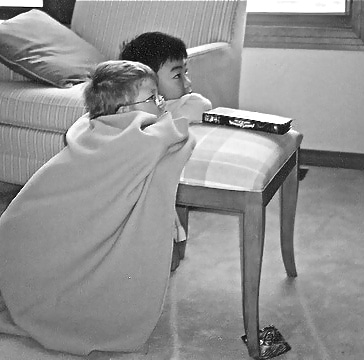
 The National Association for the Education (NAEYC) is the premier advocacy group for young children. Their position statements and publications are used to influence policy both in private and public education. In fact, I have used their recommendations to advocate that my own children not participate in standardized testing until the third grade (if at all).
The National Association for the Education (NAEYC) is the premier advocacy group for young children. Their position statements and publications are used to influence policy both in private and public education. In fact, I have used their recommendations to advocate that my own children not participate in standardized testing until the third grade (if at all).
It has been five years since the NAEYC has revised their technology position. According to the revision draft:
The purpose of this position statement is to provide a framework to guide practice in the selection, use, integration, and evaluation of technology tools and screen media in early childhood settings serving children birth through age eight…
There are conflicting views about whether young children should have access to screen-based media. The American Academy of Pediatrics and the White House Task Force on Childhood Obesity discourage screen media and screen time for children under 2 years of age and recommend limited screen time for older children (American Academy of Pediatrics 2010; Campaign for a Commercial-Free Childhood 2010; Funk, Brouwer, Curtiss, & McBroom 2009; White House Task Force on Childhood Obesity 2010). Concerns have been raised about the lack of empirical research that demonstrates positive benefits from technology use. Much of the concern has focused on the content of entertainment and educational media produced for young children including: the effects of media violence and sexuality on young children and exposure to commercial messages, stereotypes, and inappropriate behaviors and social interactions. Educators and parents have also been cautioned about background TV, the passive use of screen media and the impact of screen time on childhood obesity; irregular sleep patterns; behavioral issues; focus and attention problems; decreased academic performance; negative impact on socialization and language development, time for play and other developmentally appropriate activities; and reduced time interacting with peers, siblings, parents, and other adults (American Academy of Pediatrics 2001; Appel & O’Gara 2001; Brooks-Gunn & Donohue 2008; Campaign for a Commercial-Free Childhood 2010; Common Sense Media 2008; Cordes & Miller 2000; DeLoache, Chiong, Islam, et al. 2010; Rogow 2007; Sook-Jung, Bartolic, & Vandewater 2009; Tompoulos, Dreyer, Berkule, et al. 2010; Vandewater et al. 2007). Early childhood educators must be mindful of these cautions and concerns, particularly for children under 2 years of age. Decisions about whether, how, and when to use technology with young children need to be intentional and based on developmentally appropriate principles and practices…
Appropriate use of technology and screen media depends on the age, developmental level, needs, interests, and abilities of each child.
But is there really an appropriate use of technology for children under two? The Campaign for a Commercial-Free Childhood (CCFC) is working to make sure this revision reflects current health care information and concerns regarding screen time.
Our primary substantive concerns, which we will explain in detail, are as follows:
1. Early childhood educators should not be obligated to incorporate screen technologies in their classrooms.
2. The statement does not provide concrete guidance for helping early childhood educators make informed decisions about using technology with young children.
3. The statement does not recommend setting limits on children’s screen time and therefore undermines the public health community’s united efforts to reduce rates of childhood …










